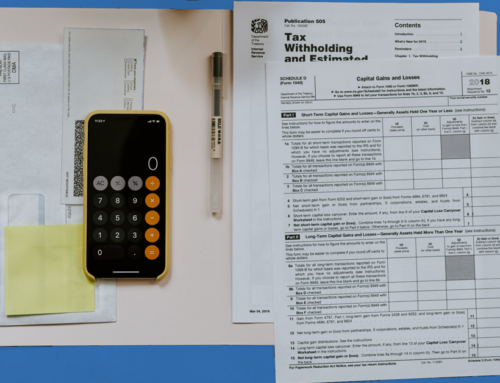Student loan repayment has become more complicated over the past ten years. Whether you’re a borrower, a parent, or a co-signer of a student loan, you face an increasingly complex set of choices when paying off your educational debt.
The ever-increasing cost of higher education forces more people to rely on student loans. Limits on federal borrowing leave most students and families to use private student loans to bridge the financial gap. As a result, graduates enter the workforce with tens of thousands of dollars in debt spread out over dozens of different student loans, each offering unique repayment options.
For most borrowers, it’s no longer possible to pay off the entire student loan balance over a few years. The system’s complexity requires a more mindful and intentional way to manage student loan repayment.
Here are a few rules I use when helping student loan borrowers construct an effective repayment strategy.
Start Repaying Student Loans Immediately
When you finish school, you get an automatic grace period before your federal student loan payments begin. Though you don’t receive monthly bills during this time, interest continues to accrue on all but the subsidized portion of your federal student loans. By starting to pay your loans immediately, you can finish paying more quickly and cut six months of interest.
Rather than opting out of the grace period, make voluntary payments so you can direct your money to unsubsidized loans and those with higher interest rates. This allows you to put your money where it will provide the maximum benefit.
Avoid the Standard Repayment Plan
When you enter repayment on your federal student loans, the servicer will put you into the standard 10-year repayment schedule unless you make a different choice. Though the standard repayment plan provides a consistent monthly bill, the lack of flexibility means any change in your finances will likely cause you to fall behind on payments.
Rather than taking that risk, federal student loan borrowers should review the available Income-Driven Repayment plans and pick the one that best meets their needs. These plans adjust your monthly federal student loan payments based on your taxable income and family size. Income-Driven Repayment plans also offer automatic forgiveness of any balance remaining unpaid after 20 or 25 years.
Your income will likely be relatively low when you first enter repayment, so payments under an Income-Driven Repayment plan will also be modest. This allows you to direct more money to private student loans that don’t offer such flexibility.
Focus on Paying Private Student Loans
If you haven’t realized it by the time you get your first bill, private student loans come with no protections and offer the worst terms. Not only are interest rates higher for private loans, but lenders also offer no Income-Driven Repayment options, no forbearance or deferment, and no opportunities for loan discharge.
You need to pay those private student loans as quickly as possible. Every spare dollar you have should go to the private student loan company.
Though your credit score and income history may not be sufficient to refinance immediately, revisit that option every year. Refinancing may lower the interest rate and improve repayment terms for people who qualify.
Understand How Tax Filing Status Impacts Student Loan Repayment
If you’re in an Income-Driven Repayment plan for your federal student loans, remember the monthly payment is based on your family size and taxable income.
For married borrowers, taxable income includes your spouse’s earnings when filing joint federal income tax returns. However, some Income-Driven Repayment plans use only your income when you file separately. Therefore, many student loan borrowers choose to file separate federal income tax returns to keep their spouse’s income out of the calculation.
Filing separately, however, may negatively impact your household’s total federal income tax liability. In addition, if your spouse also has federal student loans, filing separate tax returns may increase your monthly payments.
When creating a client’s student loan repayment strategy, I review their federal income tax liabilities based on separate and joint filings. We can ensure they’re not trading a lower monthly student loan bill for a larger tax bill.
Consider Jobs Offering Student Loan Forgiveness
Public Service Loan Forgiveness may allow you to qualify for your unpaid federal student loan balance to be forgiven after 120 months of repayment. Couple that forgiveness with the lower payments of an Income-Driven Repayment plan, and you end up paying far less than the total balance of your federal student loans.
PSLF may be the best-known program that offers federal student loan forgiveness, but it’s not the only one. Federal and state forgiveness programs exist for many professions, and some employers offer student loan repayment options. By investigating all your options, you may end up saving a significant amount of money over the long run.
Review Your Student Loans Each Year
It’s dangerous to choose a student loan repayment option and expect it will always be the most appropriate one for your needs.
Relying on an outdated plan to manage your student loan payments can cost you thousands of dollars and prevent you from accomplishing your goals.
Imagine you entered Income-Driven Repayment for your federal student loans in 2014. At the time, you may have chosen Income-Based Repayment because it offered you the lowest monthly payment. However, you may have missed Revised-Pay-As-You-Earn, a new Income-Driven Repayment plan, became available in 2015.
Repayment plans and forgiveness options change, income and family dynamics evolve, and your financial goals shift based over time. So be sure to include your strategies for managing your student loan payments in those changes to avoid missing something important.
Repaying Student Loans is Simpler With a Mindful Strategy
Worrying about your student loans all the time makes it more likely that you’ll doubt your decisions. Instead, research your options with a reliable professional who has experience in managing student loan payments. Keep your focus on the goal of getting out of debt. Remember that your plans will change over time.
By laying the groundwork now, you can create a plan for paying off your student loans intentionally and mindfully.
ABOUT THE AUTHOR
Meet Jay
 Since I became a lawyer in 1995, I’ve represented people with problems involving student loans, consumer debts, mortgage foreclosures, collection abuse, and credit reports. Instead of gatekeeping my knowledge, I make as much of it available at no cost as possible on this site and my other social channels. I wrote every word on this site.
Since I became a lawyer in 1995, I’ve represented people with problems involving student loans, consumer debts, mortgage foreclosures, collection abuse, and credit reports. Instead of gatekeeping my knowledge, I make as much of it available at no cost as possible on this site and my other social channels. I wrote every word on this site.
I’ve helped thousands of federal and private student loan borrowers lower their payments, negotiate settlements, get out of default and qualify for loan forgiveness programs. My practice includes defending student loan lawsuits filed by companies such as Navient and National Collegiate Student Loan Trust. In addition, I’ve represented thousands of individuals and families in Chapter 7 and Chapter 13 bankruptcy cases. I currently focus my law practice solely on student loan issues.
I played a central role in developing the Student Loan Law Workshop, where I helped to train over 350 lawyers on how to help people with student loan problems. I’ve spoken at events held by the National Association of Consumer Bankruptcy Attorneys, National Association of Consumer Advocates, and bar associations around the country. National news outlets regularly look to me for my insights on student loans and consumer debt issues.
I’m licensed to practice law in New York and California and advise federal student loan borrowers nationwide.
continue reading





